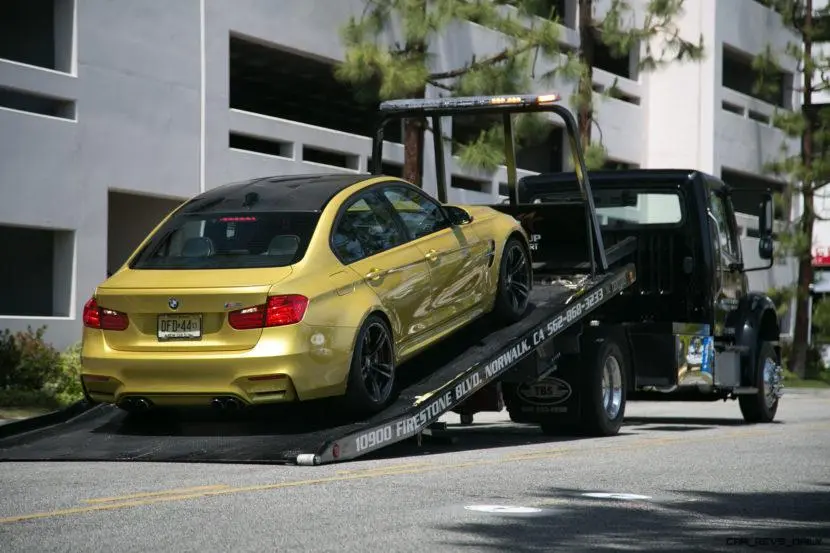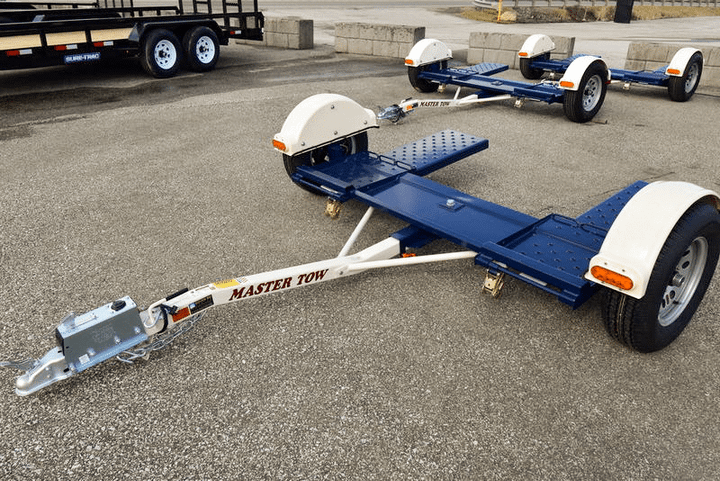


Towing a rear-wheel-drive (RWD) vehicle requires extra care and precautions to prevent costly transmission damage. This comprehensive guide will walk you through the essential steps, methods, and safety tips for safely towing your RWD car, ensuring a smooth and worry-free transportation experience.

Rear-wheel-drive cars have their driven wheels (rear wheels) connected to the transmission. If these wheels are allowed to spin freely during towing, it can cause the transmission to run dry and suffer severe damage. To avoid this, special towing methods must be employed to prevent the rear wheels from spinning.
A tow dolly is a two-wheeled trailer designed to lift the front wheels of the car off the ground, allowing the rear wheels to roll freely without spinning the transmission.
| Pros | Cons |
|---|---|
| Inexpensive | Increased risk of swaying or fishtailing |
| No need to disconnect driveshaft | Steering wheel must be secured |
To tow with a tow dolly, follow these steps:
Position the tow dolly under the front of the car and secure it with straps or chains.
Ensure the car's transmission is in neutral and the parking brake is released.
Slowly drive the car onto the tow dolly until the front wheels are securely positioned.
Lock the steering wheel in place using a steering wheel lock or by running the seatbelt through the steering wheel and locking it.
Connect the tow dolly to the towing vehicle using the appropriate hitch and safety chains.
Check that all lights (brake lights, turn signals) are working correctly.
Drive slowly and avoid sudden stops or turns, as the car's weight distribution is altered.
Another option for towing a RWD car is to disconnect the driveshaft and tow the car with all four wheels on the ground. This method is suitable for both manual and automatic transmissions.
| Pros | Cons |
|---|---|
| Eliminates transmission damage risk | Additional work to disconnect and secure driveshaft |
| All wheels on the ground | Potential fluid leaks if not secured properly |
To disconnect the driveshaft, follow these steps:
Locate the driveshaft and detach it from the rear differential.
Secure the driveshaft to the underside of the car using straps or wire to prevent it from dragging on the ground.
Ensure the car's transmission is in neutral and the parking brake is released.
Connect the towing vehicle to the car using a tow bar or tow truck.
Check that all lights (brake lights, turn signals) are working correctly.
Drive slowly and avoid sudden stops or turns.
The safest and most recommended method for towing a RWD car is to use a flatbed trailer. This method eliminates the risk of transmission damage and ensures the car is securely transported.
| Pros | Cons |
|---|---|
| Safest method | More expensive |
| Eliminates transmission damage risk | Requires larger towing vehicle |
| Stable and secure platform |
To tow with a flatbed trailer, follow these steps:
Position the flatbed trailer and lower the ramps.
Ensure the car's transmission is in neutral and the parking brake is released.
Slowly drive the car onto the flatbed trailer and secure it with straps or chains.
Connect the flatbed trailer to the towing vehicle using the appropriate hitch and safety chains.
Check that all lights (brake lights, turn signals) are working correctly.
Drive slowly and avoid sudden stops or turns.
Regardless of the towing method you choose, it's essential to follow these safety tips:
| Safety Tip |
|---|
| Check the tire pressure and condition of all tires (including the spare) before towing. |
| Use safety chains to secure the towed vehicle to the towing vehicle. |
| Obey all local laws and regulations regarding towing and trailer lighting requirements. |
| Drive slowly and avoid sudden stops, starts, or turns. |
| If towing for an extended distance, plan for rest stops to check the connections and tire pressure. |

In emergency situations where you need to move a RWD car a very short distance (less than 5 miles) and at low speeds (under 30 mph), it may be possible to tow the car with all wheels on the ground without disconnecting the driveshaft. However, this should only be done in emergencies and for very short distances, as it can still cause transmission damage if done improperly or for extended periods.
When choosing a towing method, consider the following factors:
| Factor | Tow Dolly | Disconnect Driveshaft | Flatbed Trailer |
|---|---|---|---|
| Cost | Inexpensive | Moderate | More expensive |
| Transmission Damage Risk | Moderate | Low | Lowest |
| Ease of Setup | Easy | Moderate | Moderate |
| Stability | Moderate | High | Highest |
| Towing Vehicle Requirements | Standard | Standard | Larger vehicle |
The tow dolly method is the most cost-effective option, but it carries a moderate risk of transmission damage and may cause instability during towing. Disconnecting the driveshaft is a good middle ground, with a low risk of transmission damage and high stability, but it requires additional work to set up.
The flatbed trailer method is the safest and most stable option, but it is also the most expensive and requires a larger towing vehicle. Consider your budget, the distance you need to tow, and the importance of minimizing transmission damage risk when choosing the appropriate method.
Towing a rear-wheel-drive car requires extra care and attention to prevent costly transmission damage. By following the proper towing procedures and taking the necessary precautions, you can safely transport your RWD car without risking expensive repairs or accidents. Choose the towing method that best suits your needs and prioritize safety throughout the process. Follow the step-by-step instructions for your chosen method, and always adhere to the additional safety tips to ensure a smooth and worry-free towing experience.
No, you cannot. Towing an automatic RWD car without taking precautions like using a tow dolly or disconnecting the driveshaft can cause transmission damage. The transmission requires lubrication from the engine to avoid damage.
For very short emergency towing situations under 5 miles and under 30 mph, you may be able to tow with all wheels on the ground. However, this should be avoided if possible to prevent transmission damage.
No special equipment is needed to tow a manual RWD car. You can simply put the transmission in neutral and tow with all four wheels on the ground.
No, tow dollies are not recommended for AWD vehicles. The best method is to use a flatbed trailer to ensure no transmission damage occurs.
Use a steering wheel lock or run the seatbelt through the steering wheel and lock it in place. This prevents the wheels from turning freely during towing.
For long distance towing of a RWD car, using a flatbed trailer is the safest and most recommended method to completely eliminate transmission damage risk.
Using a regular enclosed trailer is not recommended, as loading the car requires the wheels to spin freely, potentially damaging the transmission.
Plan for rest stops every few hours to check that the towing connections are secure and that the tires have proper pressure.
Check your local laws and regulations, as some areas require special licensing or permits for towing depending on the weight of the towed vehicle.
Call for professional tow truck assistance and request a flatbed tow truck if possible. Attempting to tow improperly can risk further damage.

Sarah isn't your average gearhead. With a double major in Mechanical Engineering and Automotive Technology, she dived straight into the world of car repair. After 15 years of turning wrenches at dealerships and independent shops, Sarah joined MICDOT to share her expertise and passion for making cars run like new. Her in-depth knowledge and knack for explaining complex issues in simple terms make her a valuable asset to our team.



